
There are a lot of moving parts to any M&A deal — but when you buy a company, it’s the people who drive the numbers. That’s where we come in. From navigating delicate transitions to streamlining talent management with a host of HR tools and resources, Insperity can help your portco reach its full potential. We’re your partner for harnessing the human factor — that vital area where business objectives and employee engagement align.
Develop a strong human capital strategy with Insperity, ACG’s preferred HR solution for middle market companies.
FULL-SERVICE HR EMPLOYEE BENEFITS HR TECHNOLOGY
insperity.com/acg | capital.growth@insperity.com

Want the key to portfolio growth? It’s people
with MMG ONLINE middlemarketgrowth.org LINKEDIN Middle Market Growth Magazine TWITTER @ACG_MMG
 ANASTASIA DONDE Senior Editor, Middle Market Growth adonde@acg.org
ANASTASIA DONDE Senior Editor, Middle Market Growth adonde@acg.org
The Appeal of Variety
You might have seen a lot of content in Middle Market Growth and at ACG events in the last two years about “thematic investing.” Many private equity firms say they’re targeting a few sectors where they have strong conviction for investment. It’s a way to stay active and focused regardless of whether the market is very busy—like it was in 2021—or very slow, like it’s been since the middle of 2022.
While this approach makes sense for some, there are still many generalists out there who are sticking to their guns. Some say diversification across a multitude of sectors gives LPs comfort and generates more consistent returns. Executives who oversee a variety of businesses are often excited by the dynamic nature of their work. “We invest in a variety of businesses, not just from an industry perspective but also in terms of structure and maturity,” says Joe McDougall, managing director of operating partners at Trive Capital. “I’m truly never bored. I might spend a morning working with a company in the human capital space and that afternoon with an industrial business and the next day working with a commercial bakery operation,” he continues in the profile cover story on p. 30.
The topic also comes up in the Human Capital feature on p. 22, where veterans discuss getting their start in finance by interning at private equity firms. These people often shadowed different types of executives, including origination and deal execution professionals, as well as operating partners. They say the variety of work and hands-on experience with a multitude of portfolio companies helped them choose a path for their civilian careers.
When it comes to value creation—the topic of this issue and a focus for many PE firms during a slow exit environment—the variety of tools at operators’ disposal to try to boost value at portfolio companies has been paramount. While cutting costs, adding or replacing senior executives, and making add-on acquisitions have long been tried-andtrue value-creation strategies for private equity, many are tailoring their approach to enhancing their businesses in other ways, according to the feature story on p. 36. Diversifying supply chains, reducing the real estate footprint and leveraging artificial intelligence are some of the investor approaches to prop up revenues.
We hope the value-creation tips cited in these stories will come in handy as sponsors get companies ready for exit and bet on a more fruitful M&A environment in the second half of the year. //

MIDDLE MARKET EXECUTIVE // Summer 2024 1 Connect
From the Editor

30 LETTING PORTFOLIO COMPANIES TAKE THE LEAD
Trive Capital’s Joe McDougall offers a master class in balancing the goal-oriented mindset required of operating partners with the humility necessary to meet founders and CEOs where they are.

36
LOOKING INWARD: STRATEGIES FOR VALUE CREATION
Value creation has become a priority for private equity firms, particularly in today’s slow exit environment. PE sponsors detail their approaches to generating value.
CEO Brent Baxter bbaxter@acg.org
VICE PRESIDENT, ACG MEDIA
Kathryn Maloney kmaloney@acg.org
SENIOR EDITOR
Anastasia Donde adonde@acg.org
DIGITAL EDITOR
Carolyn Vallejo cvallejo@acg.org
ASSOCIATE EDITOR
Hilary Collins hcollins@acg.org
ART DIRECTOR, ACG MEDIA
Michelle Bruno mbruno@acg.org
VICE PRESIDENT, SALES
Kaitlyn Gregorio kgregorio@acg.org
ADVERTISING SALES ASSOCIATE
Kelly Matava kmatava@acg.org
Association for Corporate Growth membership@acg.org www.acg.org
Copyright 2024 Middle Market Growth® and Association for Corporate Growth, Inc.® All rights reserved.
Printed in the United States of America.
ISSN 2475-921X (print) ISSN 2475-9228 (online)
middlemarketgrowth.org 2 Contents
MIDDLE MARKET EXECUTIVE // SUMMER 2024 EDITION
FEATURES
Cover and above image by Jacob Slaton

Your expansions. Your Cadence. At Cadence, your goals come first.
comes
Cadence, we
affordable
#yourcadence © 2024 Cadence Bank. All Rights Reserved. Member FDIC. Equal Opportunity Lender. NMLS# 410279 CadenceBank.com/ABL Learn more about how we can help you reach your goals.
There
a time when you’re ready to move boldly—to invest in yourself and your business by using what you have to fund where you want to go. At
help power those dreams with simple,
business financing that leverages your assets.



middlemarketgrowth.org 4 22 12 08 Contents THE STAND-UP 08 On Trend: Tips for Value Creation During Longer Hold Periods 11 Watch List: Unlocking the Power of Business Intelligence in Value Creation 12 The Workplace: Where to Turn When Portco Workers Strike PEOPLE FIRST 20 Acquiring Minds: MCS’ CEO on the Strategic Acquisition of Five Brothers 22 Human Capital: Veterans Find Their Footing in Finance 25 On the Move



MIDDLE MARKET EXECUTIVE // Summer 2024 5 25 56 36 PERFORMANCE REVIEW 44 Value-Add: What Businesses Gain from a Strategic Human Capital Approach 47 Best Practice: Navigating the Corporate Transparency Act THE WRAP-UP 50 Backstage: A Quarterly Market Update with GF Data and Forvis Mazars 56 Key Takeaways
Special Report: Technology
Middle Market Growth’s technology report draws on expert analysis and data to explore trends in the tech sector. Find predictions for M&A activity, deep dives into subsectors like fintech, and an exploration of how artificial intelligence is impacting investment decisions and portfolio operations.
The report is available now at middlemarketgrowth.org.

Brought to you by

The Stand-Up

08
11 ON TREND: TIPS FOR VALUE CREATION DURING LONGER HOLD PERIODS
Stout’s Rudi Moreno points to bolt-on acquisitions, technology enhancements and other ways to boost value at portfolio companies.
WATCH LIST: UNLOCKING THE POWER OF BUSINESS INTELLIGENCE IN VALUE CREATION
Leading private equity firms are increasingly working around limitations to tracking performance by setting up business intelligence systems. The CEO of Sapling Financial Consultants explains how.
12
THE WORKPLACE: WHERE TO TURN WHEN PORTCO WORKERS STRIKE
Although unionized workforces can pose challenges for PE sponsors, experts outline ways to strengthen labor relations and mitigate the risk of walkouts.
MIDDLE MARKET EXECUTIVE // Summer 2024 7
AFFECTING MIDDLE-MARKET EMPLOYERS
TOPICAL ISSUES

Stout’s Rudi Moreno Shares Tips for Value Creation During Longer Hold Periods
The transaction advisory expert points to bolt-on acquisitions, technology enhancements and other ways to boost value at portfolio companies
Last year, holding periods for private equity buyout funds averaged seven years—the longest in two decades. Rudi Moreno, managing director in the transaction advisory group at global advisory firm Stout, recently joined the Middle Market Growth Conversations podcast to discuss how the trend toward longer hold times requires a different approach to value creation. Below is an edited and condensed version of the interview.
Middle Market Growth: What’s prompting private equity sponsors to hold on to their assets longer, and is this a trend you expect to continue for the foreseeable future?
RUDI MORENO: First and foremost, we’re in a higher interest rate environment. Higher interest rates just make it harder to get deals done. Second is the uncertainty around the direction of the economy. There were talks about a potential recession due to higher interest rates, but we were all hopeful that there would be a soft landing. I think the combination of those two things really became a drag in the dealmaking environment over the last 12 to 18 months. There is still record amounts of dry powder, so at some
point this is going to have to turn. We’re all hoping that by later this year, we’ll begin to see a turnaround in terms of the deal environment, but it might flow later into 2025.
MMG: In instances where a portfolio company is held for a longer period, what projects and initiatives are being prioritized, and do those look different from what you might see during a standard hold period?
RM: One thing we’re seeing a lot is bolt-on acquisitions. We’re still seeing a large number of deals; they just tend to be smaller in terms of size. Companies are finding that, by doing bolt-on acquisitions, they’re able to continue to realize growth through those acquisitions. Not only that, but they’re getting some efficiencies by rapidly integrating them.
On the operations side, we’re seeing an increased drive toward adopting technology and making investments that are longer term in nature. You hear a lot about artificial intelligence, and that’s the cool and sexy thing, but there’s even more basic automation—automating manual processes and finding ways to squeeze out inefficiencies.
MIDDLE MARKET EXECUTIVE // Summer 2024 9 THE STAND-UP // On Trend
MMG: How does pressure from LPs to sell fit into this equation? Are they pushing sponsors to offload stakes or influencing their decisions in other ways?
RM: I think LPs will always try to get the cash in sooner rather than later, so I think there will be that continued push to get distributions. But LPs are realistic. They understand that you don’t want to force an exit if the market isn’t ready. Taking into account the fact that you want to get the best exit possible, I think a lot of them are willing to be patient.
That said, I think you see pressure when sponsors try to raise new funds. If they’re not able to show a history of distributions, when they come back asking for additional funds, LPs might want to hold off and say, “First I need you to prove to me that you can actually successfully exit before I’m going to fund the next round.”
MMG: You’ve described value creation as mostly keeping value from leaving a company. To that end, what are some of the strategies that help prevent value deterioration?
RM: As you look for efficiencies or to integrate a company into another business, you need to be careful that you’re not destroying the things that create value.
One example is a company that we worked with that had done an acquisition. They bought a company in an adjacent space, but their thesis going in was, “We’re just going to integrate this and bring them into our processes and our systems,” without realizing that there were some unique things about the business that should have been preserved. And unfortunately, those things weren’t preserved, so the new owners weren’t getting the growth they expected and ultimately, they divested.
While it’s important to have a vision for where you want to go, I think it’s equally important to understand what value the business has to begin with and to make sure you’re not taking actions that would negatively impact the ability to retain those capabilities.
MMG: What are some of the operational efficiencies that firms can tap into as they look to boost value?
RM: It’s always hard to generalize because there are vast differences depending on the business. It’ll be
As you look for efficiencies or to integrate a company into another business, you need to be careful that you’re not destroying the things that create value.
very different for a manufacturing firm versus a services firm versus a technology-based company.
The one common denominator is probably general and administrative (G&A) costs. There are always ways to cut costs in G&A, but make sure to do it in ways that don’t ultimately affect the clients or other key stakeholders. As companies grow, G&A does not grow at the same pace as revenue, so one obvious area for operational efficiencies is to keep the G&A essentially either flat or growing at a much slower pace. In the manufacturing space, there are obvious things around manufacturing distributions, consolidating sites, locations, etc. But one thing that people sometimes overlook is leveraging knowledge. If you’re doing a bolt-on, are there things about the way the target was doing business that we can leverage for the portfolio company? We have to think about these things not only in terms of assets and asset efficiency, but also leveraging knowledge across the business or leveraging best practices.
One last area that comes to mind is streamlining systems and processes. By finding ways to leverage technology, especially with these longer holding periods, it gives you a longer runway in terms of investing in technologies that you might not see payback on immediately. In fact, there might be some increase in costs, but that’ll bring you dividends a year or two down the road. A lot of people talk about AI, but there are some much simpler technologies that can get you some efficiencies in the shorter term without being quite as sexy. //
Listen to the full interview on the Middle Market Growth Conversations podcast, available on Apple Podcasts and Spotify.
middlemarketgrowth.org 10 THE STAND-UP // On
Trend
Sapling Financial Consultants
Unlocking the Power of Business Intelligence in Value Creation
 AROB HONG Co-Founder & CEO, Sapling Financial Consultants
AROB HONG Co-Founder & CEO, Sapling Financial Consultants
ccording to a recent ACG article, “tracking performance is table stakes for private equity-backed middlemarket companies.” In our seven years of working with mid-market private equity firms, however, we’ve found few do it optimally.
We’ve seen three areas where the existing key performance indicator (KPI) tracking at private equity portfolio companies falls short. Most firms use Excel spreadsheets requiring extensive time from the portco finance team to prepare, meaning data is out-of-date by the time managers get their hands on it. Existing KPI tracking tends to rely on finance, pulling P&L data from systems like Sage, QuickBooks and NetSuite, and monitoring lagging indicators that aren’t directly controllable. What it doesn’t usually do is pull from live operational systems that can provide leading indicators that are directly controllable by business managers. Additionally, existing reporting lacks relevance, as it’s almost impossible for a small finance team to distribute up-to-date Excel KPIs to all the appropriate stakeholders (e.g., to each regional manager, filtered for their region). All these issues stem from private equity firms living in their comfort zone—Excel and finance.
Leading-edge private equity firms are increasingly working around these limitations by setting up business intelligence systems (BI systems, or BI), either by building out proper BI teams under a Portfolio Support or similar group, or engaging trusted consulting firms. These systems use a front-end, client-facing visualization tool like Power BI or
Tableau, and a back-end database solution like SQL that is populated with transaction-level data directly from various systems. Optimally, the BI systems extract and report on data from operational systems like phone loggers, medical practice management systems, CRMs, route planning apps, etc.
Think in terms of three levels of maturity for BI, corresponding to the three limitations already noted. In the first, BI is used to automate some of the C-suite-directed, financially focused KPI work done by the portco’s finance team, saving staff time and increasing timeliness. This is helpful but undersells BI’s capabilities dramatically.
The second level involves measuring performance based on operational KPIs. We’ve now moved beyond lagging, difficult-to-control finance-focused metrics, but we’re still keeping the numbers cloistered inside a C-suite with sporadic and often limited ability to directly impact operational KPIs on a day-to-day basis—things like fill rate for the Detroit warehouse, phone answer rates for the Raleigh location, or shrink rates at the St Louis store.
The third level is where BI is used to manage performance at a KPI level. The Detroit warehouse manager, for instance, now has a dashboard showing fill rates by product line and shift. They know to focus on products and shifts with weaker fill rates, taking concrete steps like renegotiating shipping terms with suppliers, reconfiguring the warehouse to speed up fulfillment, and moving stronger foremen to weaker shifts.
Transitioning to BI requires a small shift outside one’s comfort zone, but for numbers-focused private equity sponsors, the payoff can be enormous. //
ROB HONG is co-founder and CEO of Sapling Financial Consultants. Launched in 2015, the company provides bespoke financial modeling, FP&A, due diligence and data analytics services tailored for its clients. Learn more at saplingfinancial.com.
MIDDLE MARKET EXECUTIVE // Summer 2024 11
THE STAND-UP //
Watch List

Where to Turn When Portco Workers Strike
Labor strikes are at a 23-year high, but experts say PE sponsors have tools at their disposal to mitigate risk and improve outcomes with unionized workers
BY CAROLYN VALLEJO
Labor unions again made U.S. headlines earlier this year, when the Supreme Court agreed to review a lower court ruling in a case involving union organizing efforts at a Tennessee Starbucks location. The case reached the court months after Starbucks employees at hundreds of locations across the country went on strike, organized by Starbucks Workers United, after unionization efforts at several stores stalled in the collective bargaining phase.
The Starbucks case is far from the only union-related headline to have reached front pages in the last year or so. Bureau of Labor Statistics analysis finds U.S. labor union strikes hit their highest volume in 23 years last year, involving workers in industries spanning food service to automotive, and healthcare to Hollywood.
Experts say they’re not surprised by the trend. “We are seeing a much greater level of interest on the part of
MIDDLE MARKET EXECUTIVE // Summer 2024 13 THE STAND-UP // The Workplace
Workplace
We are seeing a much greater level of interest on the part of employees who are not represented by unions and seeking representation.
STEVE SWIRSKY
Shareholder and Labor Management Relations Practice Co-Chair, Epstein Becker & Green
Beyond Business Interruption
Historically, acquirers in industries like manufacturing have been well-versed in the risks posed by strikes. Labor disputes often arise around wages, employee benefits and working conditions. The United Auto Workers, for instance, initiated strikes at General Motors, Ford and Stellantis factories last year after negotiations stalled as the union called for wage increases in response to rising inflation.
New factors that result in labor disputes are quickly emerging, too. The 2023 SAG-AFTRA strikes were sparked by Hollywood screenwriters’ calls for guardrails against the use of artificial intelligence, for example.
As strike activity proliferates, acquirers across sectors are having to educate themselves on evolving worker concerns and the resulting strike risks they create.
employees who are not represented by unions and seeking representation,” says Steve Swirsky, a shareholder and co-chair of the Labor Management Relations practice group at law firm Epstein Becker & Green. He points to COVID-era strike activity that captured the nation’s attention and exposed more employees to the unionization opportunity.
As a result, adds Troutman Pepper partner Seth Ford, a grassroots movement has spread across smaller businesses, resulting in a higher volume of strikes across the country (though, he notes, not necessarily a higher number of employees on strike).
Experts say PE firms are responding by integrating unionization and labor strike risk analysis from deal sourcing through exit, and embracing new tactics to understand and mitigate risks.
For private equity investors, those risks can impact their ability to make changes and build value within a portfolio company. Swirsky says potential acquirers may be caught off-guard by ancillary impacts from labor strikes, and more broadly by labor disputes at unionized businesses. In cases of asset purchases, buyers may not be bound to a seller’s existing collective bargaining agreement, allowing the new owner to renegotiate terms with unions. But investors can still face hurdles when working to implement changes at an acquired company, depending on the extent of a union’s involvement, and must weigh the benefits of making changes against initiating labor disruption.
Swirsky recalls one case in which an acquirer sought to exit a multi-employer pension plan that a seller had been contributing to, because it would create potential withdrawal liability down the road. While that action may fit an investor’s growth model, it could also become a flash point with the union. “What that employer realized is that it wasn’t worth it on this go-around of negotiations to draw that line in the sand and risk a strike,” he says.
In another instance, an employer wanted to exit a health plan at a unionized business. “I sat down with the client and talked through the realities of how important that health plan is to a union and to the relationship it has with employees,” Swirsky notes. Ultimately, he says, the financials revealed exiting the health plan was not worth the strike risk.
middlemarketgrowth.org 14 THE STAND-UP // The
From what I’ve seen, a lot of private equity investors are still dipping their toes into the acquisition of portfolio companies that have unions in place.
SETH FORD, Partner, Troutman Pepper
Mitigating Risk, from Due Diligence to Exit
Mike Warech, Ph.D., a managing director at Centri Business Consulting and leader of its Human Resources Advisory Practice, agrees that strikes can cause “measurable damage” for a company and its PE sponsors. “But I do think there is room for common ground,” he says.
Experts agree that acquirers must maintain that common ground throughout the transaction life cycle. Many risks can be uncovered during due diligence, with the potential for negotiations before a transaction clears.
Post-transaction integration is a crucial moment that third-party professionals say should include efforts to lean on third-party experts like mediators who understand unions.
“From what I’ve seen, a lot of private equity investors are still dipping their toes into the acquisition of portfolio companies that have unions in place,” says Troutman Pepper’s Ford. “They are leaning more heavily on outsourced professionals to provide support and guidance to those subsidiaries they’ve acquired and utilizing them to help understand the decision-making process, and perhaps most importantly, to understand better what operational needs are critical—what changes, if any, are really worth the risk exposure of a strike.”
And when it comes time to sell a company, mitigating risks to quell buyer concerns is just as important. “If you’re the seller, you know what types of liabilities are going to be triggered,” notes Swirsky. “Are there commitments that have been made in terms of severance that the seller may have to pay? Is there going to be a withdrawal from the pension plan, which is going to create a significant liability for the sellers that may consume a significant part of the purchase price? These are all factors that go into it.”
When Strikes Happen
As evidenced by the current state of strike activity in the U.S., walkouts are happening even with mitigation efforts. While PE sponsors and operators can take action to reduce the risk of a strike, experts urge investors to also put measures in place in the event that employees decide to walk out.
“An employer cannot give the impression to the union that the union could take advantage of walking out
on strike, even if it’s for a short period of time, without the employer being ready for it,” emphasizes Ford. Collaborating with a staffing company to understand which roles will need to be filled in the event of a strike is one impactful strategy, he adds.
Swirsky notes that during the strike, sponsors and operators must have a clear understanding of what the impact will be, including public and local community reaction to the strike, and its economic impact on the business.
Warech maintains that prioritizing common ground remains essential during a strike, too. “You have to have a really good understanding of what’s driving the dissatisfaction and get management involved quickly,” he says.
Ultimately, adds Warech, it’s important not to panic. Even if a strike happens, it doesn’t necessarily mean the consequences will be completely negative. Rather, the process of communicating and collaborating with a union to understand what striking workers are demanding can guide investors to a more effective value-creation plan. “Rather than the workers’ interests being inherently at odds with the business’ interests, aligning them through the collective bargaining process and paying attention to the employee experience can actually improve business outcomes and benefit all stakeholders in the equation,” Warech says.
At the same time, there are signs that the unionized workforce is growing more assertive with its demands. Warech pointed to cases in which unions are pursuing employee rights when voting on board members, for example.
Still, M&A activity in sectors with high union density is happening. With dealmaking volume expected to climb this year, opportunities to invest in businesses with a unionized workforce could climb with it.
Private equity firms are paying attention, and while sponsors may initially be spooked, they have resources at their disposal to mitigate risk. “There is probably a greater level of awareness (of strike risk), and what I’m seeing is, people don’t look at this as a one-size-fits-all issue,” says Swirsky. “There’s greater concern about it, but that doesn’t mean acquisitions are not taking place at unionized businesses.” //
CAROLYN VALLEJO is ACG’s digital editor.
MIDDLE MARKET EXECUTIVE // Summer 2024 15
Prioritize Cybersecurity for Deal Certainty and Value Creation
Private Equity firms prioritize cybersecurity to secure investments and enhance long-term value. Beyond regulations, it’s a strategic imperative that impacts deal certainty and investment risk. In today’s cyber landscape, resource-limited portfolio companies face heightened vulnerability, emphasizing the need for PE leaders to prioritize cybersecurity in transactions.












From due diligence to exit, Abacode grasps the unique challenges faced by midsize portfolio companies, emphasizing the need for a comprehensive cybersecurity strategy. Abacode helps private equity firms by reducing risk, ensuring regulatory compliance, and fostering a resilient cybersecurity posture across their entire portfolio. Secure your investment portfolio today abacode.com/private-equity
Thank You to ACG’s Official Sponsors of Growth Interested in sponsorship opportunities with ACG? Contact Kaitlyn Gregorio, Vice President of Sales | kgregorio@acg.org | 602-741-2226
People First

20 22
ACQUIRING MINDS: MCS’ CEO ON THE STRATEGIC ACQUISITION OF FIVE BROTHERS
The property preservation company’s leader shares his integration plans and future growth strategy.
HUMAN CAPITAL: VETERANS FIND
THEIR FOOTING IN FINANCE
How private equity firms, nonprofit organizations and ACG events help veterans transition to civilian lives and careers.
26
ON THE MOVE
Recent hires and promotions, including PE operating partners, advisors and C-suite executives.
MIDDLE MARKET EXECUTIVE // Summer 2024 19
INSIGHTS INTO FOSTERING EFFECTIVE WORK CULTURES AND CAREER ADVANCEMENT
Acquiring Minds

MCS’ CEO on the Strategic Acquisition of Five Brothers
BY HILARY COLLINS
Property services company MCS’ acquisition earlier this year of Five Brothers Asset Management Solutions, a property preservation company, is part of a broader effort to expand geographies and services. Craig Torrance, CEO of MCS, shares how he plans to integrate Five Brothers and how his “one plus one equals three” mindset drives his company’s growth strategy. This conversation has been edited and condensed for clarity.
Middle Market Executive: What initially attracted MCS to Five Brothers?
CRAIG TORRANCE: Number one, you have to know and understand the company. Five Brothers is well known in the space that we’re in, and they’ve been around for 50-plus years. They’ve always been one of the companies that made sense for us. Number two, you dig into the financials with what I call the “one plus one equals three” mindset. You think, this is bringing in a competitor and its market share, it’s leveraging efficiencies, it’s taking the talent from both
middlemarketgrowth.org 20 PEOPLE FIRST //
We looked for an unlocked opportunity and then built a solution around that, and that organic growth driver creates greater value for the business than the M&A piece.
CRAIG TORRANCE, CEO, MCS
organizations that we can overlay together. Number three is culture—will it fit, or will the body reject the organ? For that, you have to sniff around and dig deeper. Ultimately, you’re rolling the dice a bit and hoping that you can make both businesses better than they were standing alone.
MME: Can you share a bit about your plans for integrating Five Brothers into your operations?
CT: The first piece, which I think is the hardest one, is the technology platforms. When you’ve got different technology platforms, you’re either trying to grab all the information from one and put it in the other, or you’re trying to do what we’re trying to do, which is keep the best parts from each. The second piece is processes and workflows. In these long-tenured businesses, there are 50 years of learning and fine-tuning the process, and you need to understand that and not just throw the process away. There’s careful dissection of why you do that today and if that process still fits the new, combined entity. The final piece is putting great people in the right seats. You have great people in both organizations, but sometimes you have to move the seats around a bit and hope that you can find a great fit and they can excel.
MME: What type of growth strategy will you be pursuing? Do you have plans for similar acquisitions going forward?
CT: We have a five-year growth plan—we’ll always be looking for acquisitions at the right value that fit the business, but I would say the bigger part of it is the organic growth plan. When you look at organic growth drivers within each market, you’re looking at the addressable market, the pain points you’re trying to solve within that market, your competitors, your value drivers, and then the actual sales and operational execution of that value once you have customers. We went into the single-family rental (SFR) space two years ago with no customers, just an idea, and today we work with 28 of the top 30 SFR owners in the country. We looked for an unlocked opportunity and then built a solution around that, and that organic growth driver creates greater value for the business than the M&A piece. There’s a third part, which is efficiency, margin expansion, cost management, etc., but organic growth and M&A growth are the two main pieces of our plan.
MME: Where do you hope to expand?
CT: Each segment of the business has its own growth plan. Take SFRs: We have 25 service centers and 25 markets that we serve. We could have 50. So growing the business geographically is an area where we can expand. There are also completely new verticals that we’ve approached. One is offering property services to the federal government, and we’ve won some contracts in that space. The U.S. government spent $35 billion on building maintenance last year, so being able to tap into that is huge. Another is a direct-to-consumer model that we piloted in Arizona that we’re expanding into a lot of markets this year, where we do remodels, home maintenance, small additions and casitas. There are homeowners today looking for these services, and the only places they can go are aggregated websites or to contractors via word of mouth. We’re coming at this as a national provider of these services, standing behind our word, with service centers across the country. There are other verticals we’re looking at—student housing, for instance. Anywhere there’s a building, we see an opportunity.
MME: What challenges are you facing in the property services space, and how are you planning to drive growth despite those?
CT: Labor is still hard to find in certain trades—it’s certainly easing up but still nowhere near where it needs to be. We’re working through that with referral programs, and our service center markets can source people locally versus the campaigns we’ve had in the past where we’ve tried more of a national approach. There’s also a challenge in how rapidly technology evolves. At every site we work in, there are different technology needs and different levels of technological maturity. We work with financial institutions and U.S. government clients that are very conservative and have very strict processes and older systems; SFRs, which are a very new market with unevolved systems; and big commercial entities like Starbucks and Best Buy that are moving very quickly with technology. Being able to have a singular platform that does it all for all these clients is a challenge, and we’re approaching that by increasing our investment in technology. I think that will yield significant returns in the next five years and will drive our future. //
HILARY
COLLINS is ACG’s associate editor.
MIDDLE MARKET EXECUTIVE // Summer 2024 21

Veterans Find Their Footing in Finance
How private equity firms, nonprofit organizations and ACG events help veterans transition to civilian lives and careers
BY ANASTASIA DONDE
When David Fowles left the U.S. Army Special Forces in 2017, after a more than 20-year career that took him all over the world, he wasn’t sure what he was going to do next. He obtained an executive MBA at Northwestern University’s Kellogg School of Management but found it difficult to get jobs in the finance sector without experience. “Private equity sounded interesting, but people told me I didn’t have the right background,” he says.
It was eventually his local network in Tampa, Florida, where he was introduced to the nonprofit 51 Vets, that got him in the door with a local lower mid-market private equity firm, Mangrove Equity Partners. While interning there, Fowles shadowed different types of executives and worked under Managing Director Glenn Oken, who became a mentor.
Fowles spent just three weeks interning and then got a job as a vice president in origination. He worked at Mangrove for three years and eventually moved on to The Riverside Company, where he’s now a regional director in origination covering the Southeast and Mid-South regions.
Veterans leaving the military say they struggle with several things, including picking a new path, transitioning to civilian life and gaining the experience necessary to launch their new careers. Some had obtained bachelor’s degrees a long time ago in unrelated fields, and while recent master’s degrees do help, they are often not enough.
Now, a variety of nonprofit organizations, internship programs, events and upskilling tools offer military veterans a path to civilian careers. This year, ACG hosted a Veterans in the Middle Market reception at DealMAX for the first time, in partnership with 51 Vets, which connects transitioning veterans to business leaders. The organization focuses on special units within the U.S. military, including the Green Berets, Navy SEALs, Marine Special Operations forces and others.
51 Vets, which was started by former investment banker and entrepreneur Jordan Selleck, also has Riverside origination professionals Bob Landis and Jeremy Holland on its advisory board, as well as other private equity and M&A advisory executives from Kirkland & Ellis, Windjammer Capital, Stifel and PwC.
The DealMAX event was designed to showcase a program that ACG New York hosts for veterans. Other ACG chapters are now considering launching their own local events, Fowles says.
middlemarketgrowth.org 22 PEOPLE FIRST //
Capital
Human
When you’re reentering the civilian world, a lot of people want to help, but the difficult thing is figuring out where you fit.
JOHNNY
TODD, MBA Candidate, The Wharton School of
the University of Pennsylvania
A Fresh Start
When Fowles first started working at Mangrove, he shadowed operating partners, originators and deal execution professionals. He found the work engaging. “I didn’t want to sit behind a computer and look at a spreadsheet all day, but that’s not what we do. There is a lot more to business development,” he says. He and other veterans who intern at private equity firms appreciate the diversity of work and the hands-on experience with portfolio companies in different industries. They say it helps them understand how their prior experience translates to the private sector, choose a path for their careers and make important connections.
Johnny Todd, another former Green Beret and a recent Riverside intern, says he knew he wanted to get into finance, but he didn’t know where he would fit at first. He’s currently completing his MBA at the University of Pennsylvania’s Wharton School. “When you’re reentering the civilian world, a lot of people want to help, but the difficult thing is figuring out where you fit,” he says. Following internships at several financial organizations, he’s considering a career as an equity analyst or a wealth manager, or in private equity or private credit.
Both he and Fowles say there are a lot of skills Special Forces veterans bring to the table, including discipline, teamwork, project and people management, and an ability to leverage team members’ skills to achieve a mission. Encountering people from different cultures and walks of life in the military is also instructive, Todd says, adding: “Understanding how to balance a lot of different types of people and cultures is important.”
Todd credits 51 Vets with “being extremely helpful in my development post-military and giving me exposure to mentors, different industries and contacts that I wouldn’t otherwise have.”
Todd’s 10-year military career took him to Afghanistan, Ukraine, Turkey and across Eastern Europe, among other places. Since leaving the Special Forces in 2023, where he last served as a future operations officer in Fort Carson, Colorado, he has worked at Blackstone as a summer associate and at Riverside as a spring semester intern. He plans to intern at the JPMorgan Private Bank this summer.
Transition Tools
Riverside’s Landis says veterans need help reentering civilian life, and organizations also need to be informed of the
benefits of hiring veterans. “It’s a struggle on two sides: getting employers to understand the needs and benefits of veterans,” he says, “as well as providing veterans with a bridge to normal life in the civilian world.” Landis was deployed to Germany for five years as a major with the U.S. Army in the 1970s.
Todd credits SkillBridge, a Department of Defense program, with helping him get his footing in the civilian world. SkillBridge helps service members gain work experience through industry training, apprenticeships and internships in the last 180 days of military service. It also connects service members with industry partners and “real-world job experiences,” according to its website.
Michelle Noon, founder and managing partner at Clearhaven Partners, has an internship program that includes veterans. Noon, who serves on the 51 Vets advisory board, says that while veterans have a lot of strong skills for work in finance, they often need other training to make the leap. “They need to have an understanding of financial modeling, P&L and data analysis,” she says. “They have to know how to talk the talk and learn the lingo.”
Exposure to seminars, webinars, a network of contacts and education on the subject matter are some of the tools 51 Vets and internship programs provide. “There is a gap that needs to be bridged to make it from point A to point B or even be considered” for roles in M&A, Noon says.
Greg Bondick, managing principal at Windjammer Capital in Boston, is the president of 51 Vets’ advisory board and a member of the Leadership Circle for The Honor Foundation, a career transition program for U.S. special ops forces. He says these organizations help veterans transfer to the private sector. They assist with developing a resume and LinkedIn profile, and provide access to career mentorship, networking and internships.
Windjammer has a private equity operations internship that “embeds” veterans with portfolio companies to work on specific projects. These projects provide tangible private sector work experience and expose participants to other parts of the private equity business. “The veterans we work with are highly accomplished and determined to succeed. They have been trained as leaders and have the emotional intelligence to build an effective organizational culture,” Bondick says. “They can walk on the factory floor, talk to people, make them excited about their jobs and build an effective organizational culture.”
MIDDLE MARKET EXECUTIVE // Summer 2024 23
Human Capital

Paths to Other Industries
Doug McCormick, managing partner and chief investment officer at Washington, D.C.-based HCI Equity Partners, agrees that veterans can be a good fit for manufacturing and distribution companies. McCormick, who served as a captain in the U.S. Army’s 25th Infantry Division until the mid-1990s, says he managed large-scale projects and moved resources and people to different places, which can be helpful in manufacturing, distribution and other technical fields. Veterans have often been exposed to technical equipment and complicated operations, and have skill sets that are applicable to many of these industries, he adds.
Now McCormick wants to offer other veterans a path to civilian careers. He says several senior leaders at his portfolio companies are former service members. He credits different “feeder systems” that help veterans transition and match them to the right jobs. Last summer, HCI partnered with Headlamp, an organization that helps military veterans find civilian jobs, and Sutton Growth Group, a professional services firm focused on training. The collaboration will identify veterans for positions at HCI portfolio companies and provide training for their
new roles. Boston-based Headlamp bills itself as a “Veteran Transition Accelerator” that helps veterans “explore roles that fit their skills and interest and work with employers to create opportunities.”
McCormick himself began his civilian career in investment banking at Morgan Stanley after leaving the military. He says he found that investment banks appreciated the veteran skill set the most, and it’s where “you get immersed in significant transaction volume and a lot of different kinds of businesses.” He, too, says that teamwork, work ethic, integrity, collaboration and experience managing in a stressful environment are some of the skills veterans can bring to M&A work.
Like other veterans leaving the armed services, McCormick went on to obtain an MBA, studying at the Harvard Business School. “Extra schooling is how some people navigate that transition,” he says, but notes that it won’t get you all the way there. “Business school gave me contextual options, but it isn’t for everyone. It’s a big investment in terms of income and time.” //
ANASTASIA DONDE is Middle Market Growth’s senior editor.
middlemarketgrowth.org 24 PEOPLE FIRST //
From left: Dr. Stephen Kiser, general partner at Veteran Ventures Capital; General John Raymond, chief of space operations, U.S. Department of Defense; and Michelle "Mace" Curran, F-16 fighter pilot, speaking at DealMAX’s veterans’ reception
PEOPLE FIRST // On the Move
FARRUKH BEZAR
Greenwich, Connecticut-based Littlejohn & Co., a private investment firm, hired Farrukh Bezar as an operating advisor.
Bezar, who has more than 25 years of experience in the transportation and logistics industry, previously held the position of senior vice president and chief strategy officer at CSX Corp., where he was instrumental in leading strategic growth initiatives.
In his new role at Littlejohn, Bezar will collaborate with the firm’s transportation and logistics team to identify promising investment opportunities and assist logistics portfolio companies in refining their market strategies, fostering growth and boosting profitability.
Before CSX, Bezar founded Lynwood Partners, an advisory firm specializing in transportation and logistics. He also held roles at Clarendon, Booz Allen Hamilton and A.T. Kearney. Earlier in his career, he worked in sales and marketing at CSX; Atchison, Topeka and Santa Fe Railway Co.; and as a financial analyst at Chase Manhattan Bank.
ANDY MYERS
Lehi, Utah-based eLuma, a Leeds Equity Partners portfolio company and provider of online special education and mental health services, has appointed Andy Myers as CEO.
Previously, Myers served as president and CEO of Waterford, a nonprofit organization known for integrating learning science with mentoring and technology to enhance early education. Before Waterford, he was the chief strategy officer at Renaissance Learning and held key positions at Scientific Learning and Pearson.

TONYA ZWEIER AND JEFFREY (JEFF) SILVERMAN
Philadelphia-based private equity firm Inverness Graham recently added Tonya Zweier as financial operating partner and Jeffrey (Jeff) Silverman as growth operating partner.
Zweier previously worked at private equity firm The Riverside Company, where she was finance director. She also held several roles at McBee, Alliance Global Services, the Neat Company and Safeguard Scientifics.
Before joining Inverness Graham, Silverman was chief revenue officer at Qualifacts. He has also led sales organizations and teams for healthcare providers such as Change Healthcare and McKesson Provider Technologies.
MIDDLE MARKET EXECUTIVE // Summer 2024 25
the Move
JIM WIEGMANN (PICTURED) AND SUDEEP SHETTY
New York-based private equity firm One Rock Capital Partners recently appointed Jim Wiegmann and Sudeep Shetty to its team of operating partners.
Before One Rock, Wiegmann was CEO of OLM Food Solutions, a former One Rock portfolio company that was sold to a strategic buyer in July 2023 under his leadership. Prior to OLM, Wiegmann held executive roles at Pro-Pet, Snack Alliance and Musco Family Olive Co. He also worked at Nestle USA, Frito-Lay and Del Monte. Based in London, Shetty will be tasked with enhancing One Rock’s capabilities in information technology and business transformation across its U.S. and European portfolio companies. Before joining One Rock, he served as chief information and transformation officer at Britvic Soft Drinks, a global beverage company, where he oversaw global IT, transformation, factory engineering, and data and analytics. He also was head of projects and programs at Jack Wills, head of omnichannel operations at Selfridges & Co. and e-commerce program manager at Marks and Spencer.
JEFF ANDREWS
Bethesda, Maryland-based Aligned Orthopedic Partners, a provider of orthopedic services in the mid-Atlantic region, appointed Jeff Andrews as its new CEO.
Andrews has been the CEO and executive vice president at Regent Surgical Health and Compassus Home Health and Hospice, both private equity-backed firms.
He also held a leadership position at United Surgical Partners International and served as chief operating officer of Sequel Youth and Family Services.

JEREMY WRIGHT
Princeton, New Jersey-based private equity firm Princeton Equity Group hired Jeremy Wright to be an operating partner. In his new role, Wright will provide tactical support to Princeton’s portfolio companies, collaborating closely with management teams to spearhead strategic and operational initiatives.
Wright previously served as an operating partner at Atlantic Street Capital. During his time there, he supported service sectors, including pool service, HVAC, medical supply and aftermarket automotive services. Wright began his career as a management consultant at AlixPartners, where he identified and executed operational improvement initiatives for multi-unit retail and distribution companies.
middlemarketgrowth.org 26 PEOPLE FIRST // On
JORDI PUJOL
San Diego-based Objective Investment Banking & Valuation, a firm focusing on M&A and valuation advisory services for middle-market companies, promoted Jordi Pujol to managing director, valuation.
Based in Los Angeles, Pujol will continue to spearhead the firm’s growth initiatives and provide valuation expertise to clients both in California and across the nation.
Before joining Objective, where he has worked for the past two years, Pujol was a senior manager at EY, contributing to the firm’s Corporate Finance practice within the Strategy and Transactions division.
DOMINIC (NICK) BRIGNOLA
Dallas-based Surgical Notes, a national provider of billing services and solutions for ambulatory surgery centers and surgical hospitals, appointed Dominic (Nick) Brignola as its new chief financial officer. Surgical Notes is backed by Capstreet, a Houston-based private equity firm.
Before Surgical Notes, Brignola was senior vice president of finance and operations at R1 RCM, where he managed financial operations for a major revenue cycle management company serving hospitals, health systems and physician groups.
Prior to that, he held positions as vice president of finance at Solera Holdings and vice president of finance and treasury at Caris Life Sciences.
PETE LAMSON
Volition Capital, a Boston-based growth equity firm, recently appointed Pete Lamson as its new chief operating officer and head of portfolio operations.
Lamson, who has more than 35 years of leadership experience, will focus on driving operational excellence and accelerated revenue growth for Volition’s portfolio companies.
In his new role, Lamson will provide strategic guidance to portfolio companies while enhancing Volition’s operational efficiency and internal processes.
Lamson’s background includes serving as CEO of Employ, where he led a private equity-based roll-up of four businesses in the HR technology space, including JazzHR, a Volition-backed entity, where he was CEO.
He also worked as senior vice president of Global Sales at Carbonite.

MIDDLE MARKET EXECUTIVE // Summer 2024 27
PATRICK O’KEEFE
Princeton, New Jersey-based Edison Partners, a growth equity investment firm, appointed Patrick O’Keefe as an operating partner.
O’Keefe joins Edison to enhance the Edison Edge value-creation platform. His role will focus on scouting new investment opportunities within healthcare technology and advising portfolio company executives on leadership and strategic market entry.
Before joining Edison Partners, he was the chief revenue officer at Zelis, a healthcare technology solutions company. At Edison Partners, he led enterprise sales and client management for more than seven years.
His previous roles include senior executive positions at Anthem, UnitedHealth Group and Oxford Health Plans.
O’Keefe also currently serves on the boards of Healthcare Recovery Solutions and Ringmaster Technologies, bringing a deep understanding of the operational challenges and growth strategies within the sector.

JESSIE WOOLLEY-WILSON
San Francisco-based Owl Ventures, a venture capital firm specializing in the education technology sector, recently hired Jessie WoolleyWilson as an operating partner.
Woolley-Wilson’s career spans over 20 years in the education technology space. She is the former CEO and president of DreamBox Learning, a company within Owl Ventures’ portfolio until it was acquired by Discover Education in 2023.
Her new responsibilities at Owl Ventures involve identifying and evaluating new investment opportunities, providing strategic guidance and mentorship to portfolio companies, and participating actively on their boards. She serves on the boards of Owl Ventures portfolio companies Quizlet and Class Technologies.
Before DreamBox, Woolley-Wilson served as president of Blackboard’s K-12 Group and LeapFrog SchoolHouse, the K-12 division of LeapFrog Enterprises. She also has held leadership positions at collegeboard.com, the interactive division of The College Board, and at Kaplan.
middlemarketgrowth.org 28 PEOPLE FIRST //
On the Move
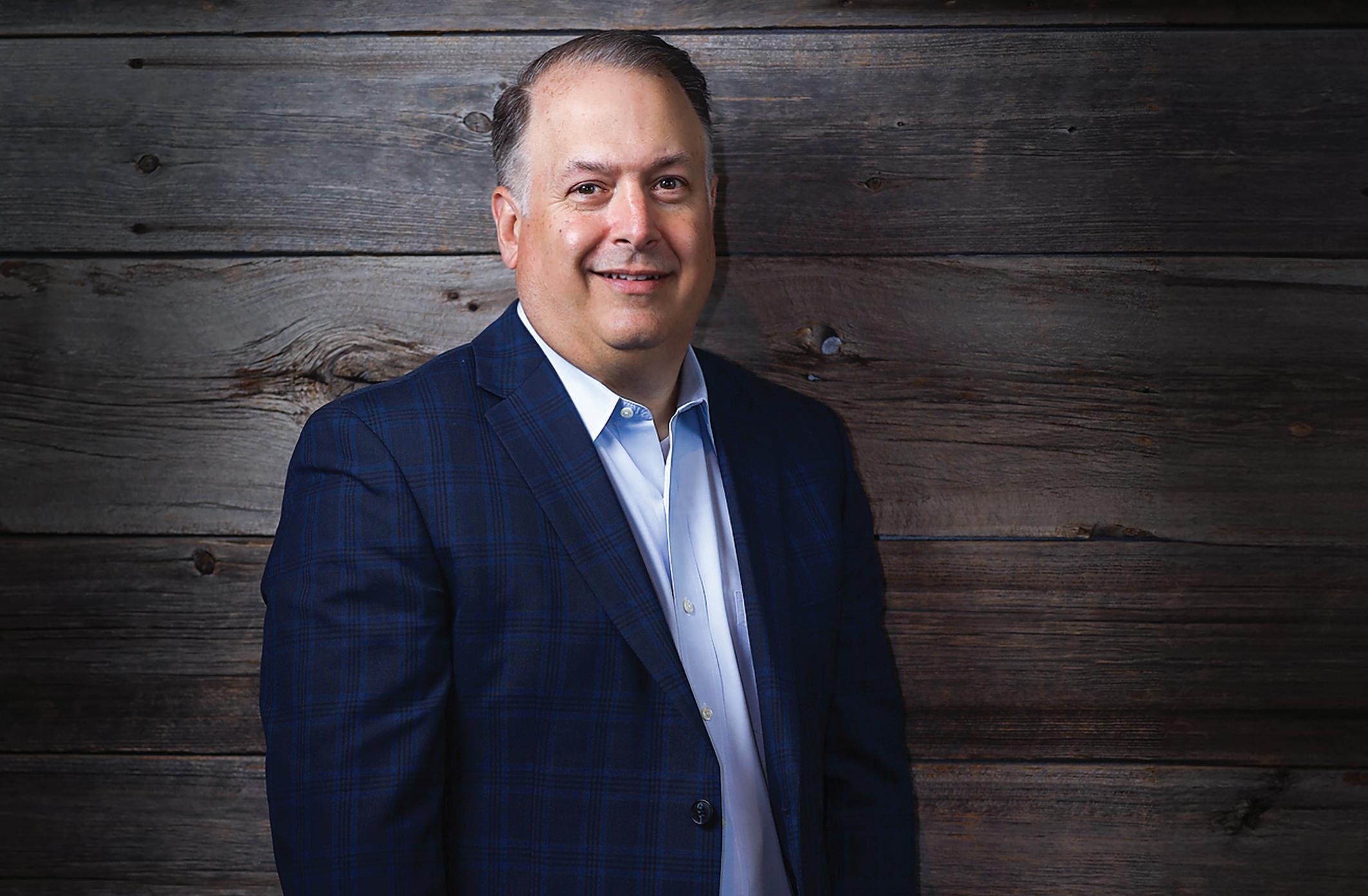
LETTING PORTFOLIO COMPANIES TAKE THE LEAD
Trive Capital’s Joe McDougall offers a master class in balancing the goal-oriented mindset required of operating partners with the humility necessary to meet founders and CEOs where they are.
LOOKING INWARD: STRATEGIES FOR VALUE CREATION
Value creation has become a priority for private equity firms, particularly in today’s slow exit environment. PE sponsors detail their approaches to generating value.
Joe is the perfect person to bridge that gap between the deal team and the portfolio company operators, so they can feel more comfortable in this new setup.
TY JOHNSON CEO, Cascade Services (a Trive portfolio company)
MIDDLE MARKET EXECUTIVE // Summer 2024 29 Features AN IN- DEPTH LOOK AT TRENDING ISSUES FACING EXECUTIVES AND OPERATORS
30 36
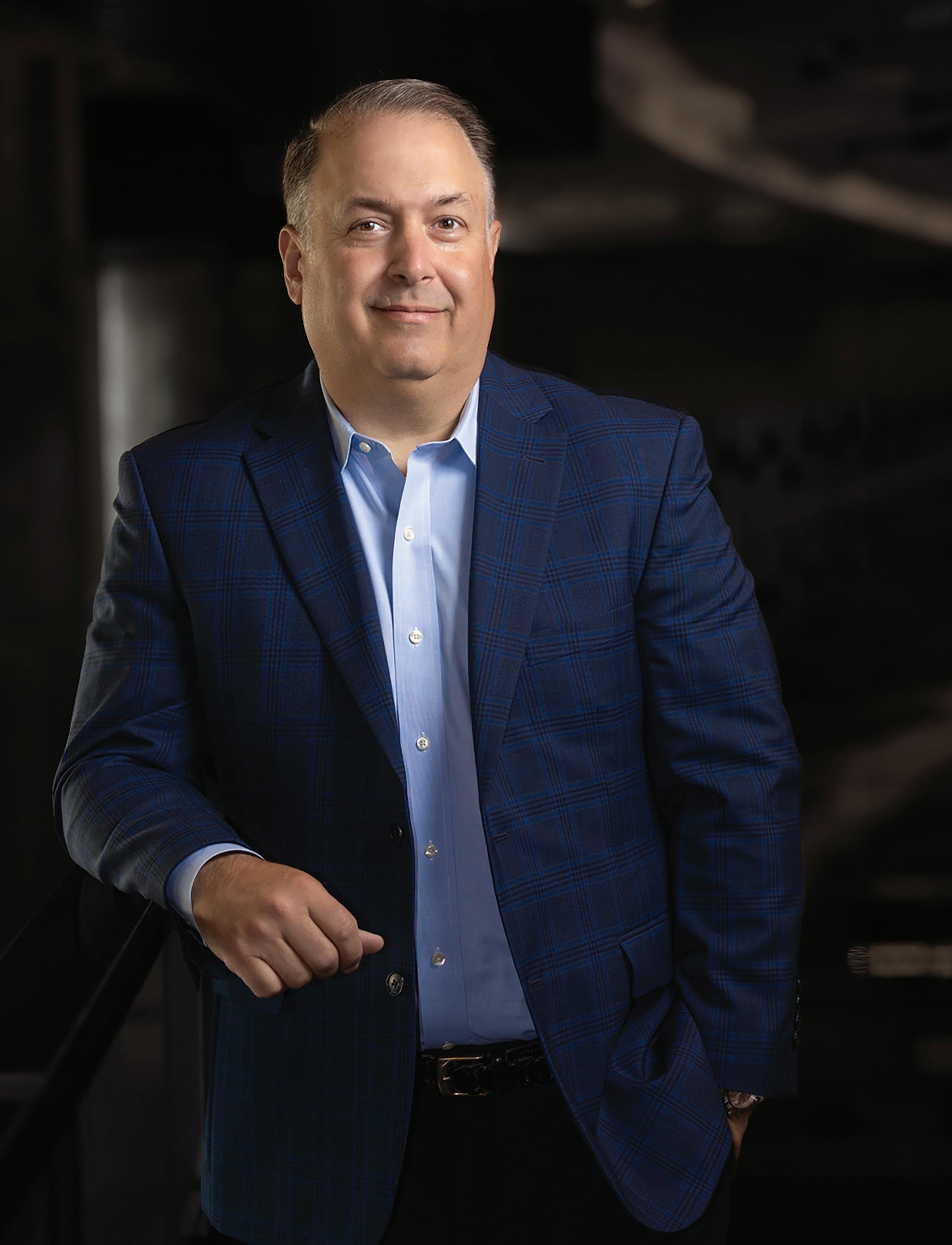
At Trive Capital, Joe McDougall runs an operating partner team that prioritizes a true sense of collaboration
LETTING PORTFOLIO COMPANIES the
Take Lead
Features
PHOTOGRAPHY BY Jacob Slaton WRITTEN BY Meghan Daniels
Features
For private equity operating partners, there is no shortage of interpersonal dynamics to manage. Partnering with business leaders, especially those raising institutional capital for the first time, requires a delicate mix of hand-holding and straight-talking. Operating partners must be analytical, experienced and goaloriented, while also having the humility and emotional intelligence to meet founders and CEOs where they are.
By all accounts, Joe McDougall has mastered this balancing act.
As managing director of operating partners at Dallas-based private equity firm Trive Capital, McDougall knows how to tread lightly and gain the trust of portfolio company leaders—while also maximizing value creation. McDougall, who serves as an operating partner himself in addition to managing a growing team, draws on lessons from a deep career in human resources leadership and other management roles.
AN EXHILARATING INTRODUCTION
McDougall’s first experience with private equity came after a decade and a half at Honeywell International, where he worked across human capital and communications and spent seven years as head of HR for Honeywell’s $9 billion chemical business. In 2013, when McDougall joined Axalta Coating Systems, a paint and coatings company that private equity firm Carlyle had carved out of DuPont, he knew immediately he had landed in the right place.
“The ride at Axalta was exhilarating. It was a $4.5 billion company with 13,000 employees, but we ran it like a startup. Carlyle wanted a white-sheet-ofpaper approach. The company had been run one way by DuPont for 100 years, and at every turn our goal was to challenge those norms. The pace and amount of change was exciting, and we had a private equity sponsor that was wildly supportive of the work we were doing—mostly because we were driving incredibly positive results,” says McDougall. The results were so positive, in fact, that Carlyle decided to take
Joe has the analytical horsepower and experience to quickly assess what questions he needs to ask to arrive at the best solution for a problem.
CHARLES SHAVER CEO, Nouryon (a Carlyle Group portfolio company)
the company public just 21 months later, a process for which McDougall was on the front lines.
“Joe came on board as head of HR, but he ultimately became like a chief of staff for me,” says Charles Shaver, who was chairman and CEO of Axalta at the time and currently serves as chairman and CEO of Carlyle portfolio company Nouryon. “Joe is one of those people who, if he walks into a room, everyone likes him immediately, even if they don’t know him. He exudes confidence and likability, and he’s extremely thoughtful. Joe has the analytical horsepower and experience to quickly assess what questions he needs to ask to arrive at the best solution for a problem.”
McDougall remained at Axalta for six years, ultimately leading its largest line of business, its $1.6 billion global refinish division, and overseeing the EMEA region. “When we started to become another
middlemarketgrowth.org 32
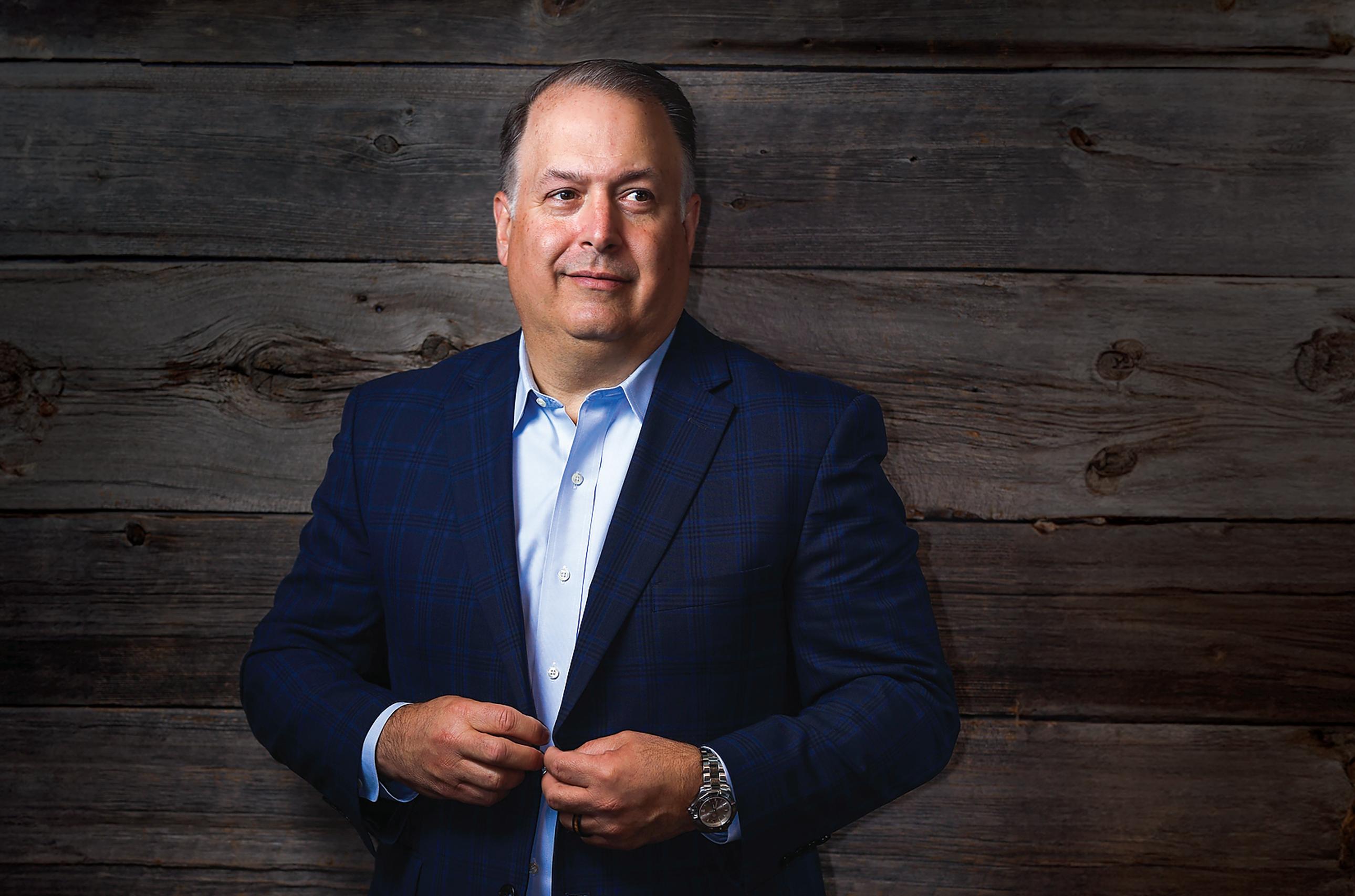
boring old public company, I knew it was time for a new opportunity,” says McDougall.
HANDS-ON LEADERSHIP
McDougall joined Trive Capital in 2019 to serve as an operating partner for the private equity firm’s portfolio companies and build out a more formalized operating partner team. For McDougall, the role provides an opportunity to do what he loves—have his hands in lots of different projects, apply his leadership skills to a variety of situations and move quickly to solve a wide range of problems.
Trive is a generalist firm. Its more than 30 active portfolio companies span industries including aerospace and defense; consumer goods; education; energy; food and beverage; healthcare; and technology, media and telecom.
“We invest in a variety of businesses, not just from an industry perspective but also in terms of structure and maturity. I’m truly never bored. I might spend the morning working with a company in the human capital space and the afternoon with an industrial
business and the next day working with a commercial bakery operation,” says McDougall.
Trive’s operating partner team is organized by functional expertise. There are currently 11 operating partners. Around half of those specialize in areas like finance, human capital and IT. The other half are generalists, most of whom are earlier in their careers and looking to pivot from the investment side of the business.
This functional focus makes sense for Trive’s investment thesis and helps to prevent tension between portfolio company leaders and Trive’s operating partners. “We’re not industry experts, which helps us be less threatening to the management team. We bring deep expertise in a variety of areas, but we don’t have the 30 or 40 years of experience in their industry that they have. Our goal is to work with them, learn from them and offer help where we can,” says McDougall.
While McDougall oversees the operating partner team, he estimates he spends about 50%-70% of his time working directly for portfolio companies. “It’s what I love about the job,” he says.
MIDDLE MARKET EXECUTIVE // Summer 2024 33
Features
McDougall’s personality and approach make him an ideal fit for working with CEOs and founders who have no prior experience with private equity. “In many cases, Trive will buy a smaller company that has never raised institutional capital before. They don’t ‘speak PE’ yet. Joe is the perfect person to bridge that gap between the deal team and the portfolio company operators, so they can feel more comfortable in this new setup,” says Ty Johnson, CEO of Trive portfolio company Cascade Services and a former Trive operating partner.
McDougall’s humility and can-do attitude extend outside of his professional role. Through a club at his daughter’s high school, The Pennington School, McDougall volunteered on a service trip to support a refugee camp in Malawi and continues to help with the club’s efforts. The student-led club has collected and delivered refurbished iPads preloaded with learning materials, developed more affordable feminine hygiene products to keep menstruating teens participating in school, designed desks to fit in the camp’s overcrowded classrooms, and more. “Joe is an all-hands-on-deck kind of guy. There’s no job he won’t do, and he’s always modest and humble—he just wants to contribute and add value, and it doesn’t matter if anyone notices him doing it,” says Susan Wirsig, director of applied science and a mathematics teacher at The Pennington School.
PRIORITIZING TRUE PARTNERSHIP
Some view operating partners as something akin to enemy combatants, foisted on management teams by the acquiring firm post-close to slash costs and execute takeovers.
When McDougall joined Trive, his goal was to build a very different type of operating partner team. Rather than push their services on portfolio company CEOs, Trive’s operating partners rely on the CEOs to take the lead.
“The stereotypical view of an operating partner is as a shadow leader—they love to tell you what you’re doing wrong. Therefore, portfolio company management teams can be hesitant at first. But what we do
is come in and roll up our sleeves and work as long as we have to. We’re there to partner and get in the mix, and that translates very quickly,” says McDougall.
Trive employs a “pull model,” in which portfolio company leaders identify their own needs and reach out to the operating partner team accordingly.
“Participation is completely optional. If you need expertise or assistance, it’s there. If you feel like you’re in good shape, there’s no pressure,” says Johnson.
Perhaps the most impactful marketing for the operating partner team comes every year at Trive’s leadership summit for portfolio company CEOs and CFOs. “The operating partner services can go a little bit viral at those summits,” says Johnson. “If you hear that one CEO worked with the operating partner team to increase this or reduce that, of course you want some of that too. It’s a natural incentive to utilize the team more.”
For Trive, the goal is to optimize while respecting the company’s ethos and goals. “In fact, I would bet 100 bucks that our headcount is higher than it was when Trive bought the company,” says Scott Wise, CEO of Trive portfolio company Valor Healthcare. “They’re not looking to slash costs to hit an EBITDA target—their goal is to help provide resources to fuel the growth of the company. If that means we have to hire more people, but there’s an ROI at the end of the process, they’re all in. For me, as a leader of a company with an aggressive strategic growth plan, that’s a fantastic support system and attitude to have.”
For McDougall, prioritizing communication with both the investment team and management team is key, as is gathering feedback. After every project they work on, the operating partner team calculates a Net Promoter Score (typically used to measure customer loyalty) based on surveys from both the portfolio management and the Trive investment teams. “It’s crucial to get that real-time feedback from both sides and keep everyone happy,” says McDougall.
Not only do Trive portfolio companies appreciate the operating partners’ expertise—often, they want to
middlemarketgrowth.org 34
permanently hire them. “The Trive operating partner team has become a bit of a talent importer and exporter for our portfolio companies,” says McDougall. “We rarely lose anyone on our team to anyone outside of Trive—but our portfolio companies frequently want to, and do, hire people on our team.” To date, seven operating partners have rotated permanently into portfolio companies.
McDougall celebrates these moves. “It’s great for the portfolio companies to know they have someone who knows their business, who can drop into these roles like they’ve been there forever. It’s great for Trive that we’re putting a trusted leader into one of our portfolio companies, and it’s great for furthering the individual operating partner’s career.”
A FLEXIBLE FOUNDATION
One member of Trive’s operating partner team may fill in for a singular role at a portfolio company, or multiple members might serve as an interim management team while the company is being built up. The strength and diversity of the operating partners’ skills give Trive an upper hand and allow the firm to be creative when it comes to structuring investments.
For example, in 2022, Trive created Cascade Services, the portfolio company of which Johnson is CEO, through a partnership with LP First Capital. Johnson had previously served as CEO of another Trive portfolio company, Select Interior Services, which ultimately was taken public. “At Cascade’s inception, I was the only employee,” says Johnson. “I had four Trive Capital operating partners as my management team for the first six to nine months. They built a financial infrastructure, managed all the hiring and payroll and benefits, and helped me think about the staff I wanted to build. The company wouldn’t have been created without them. Now, two years in, we’re at least 18 months ahead of where we would have been if I had to do all that myself.”
Valor Healthcare’s Wise also relied on the Trive operating partner team early on. As a carve-out, Valor had several glaring holes in services that it had been sharing with its parent company. “We didn’t have a CHRO, or a CFO for that matter. We leaned heavily on the operating partner team at that point and have also engaged significantly with Joe’s team since then, including an HR leader who helped our recruiting team with some challenges and a former CEO who has been serving as an interim COO for the last six months,” says Wise.
Every portfolio company has different needs. McDougall started his career at large-cap companies, which relied on rigid processes and deep talent benches to drive results. That’s often not the case at the businesses he works with today. “One of the most important lessons I’ve learned from my time in the middle market is that flexibility is key,” says McDougall. “It’s a much more fluid, entrepreneurial world. What works in an aerospace company might not work for a bakery or a financial services business. Above all, you have to be adaptable.” //
MEGHAN DANIELS is a freelance writer and editor based in Dutchess County, New York.
Highlights CAREER
TRIVE CAPITAL
Managing Director, TC Operating Partners April 2019 - Present
AXALTA COATING SYSTEMS
Executive VP & President, Global Refinish & EMEA, and Other Roles 2013 - 2019 HONEYWELL INTERNATIONAL
VP, Human Resources and Communications, and Other Roles 1998 - 2013
EARLY CAREER
Roles in Consulting and Human Resources 1993 - 1998


Looking
INWARD
How private equity sponsors are maximizing value creation at portfolio companies in a limited exit environment
ILLUSTRATIONS
Britt Erica Tunick
BY Rob Dobi WRITTEN BY
Features
Features
How do you extract the maximum value from private equity investments when traditional exit routes are all but nonexistent?
That’s the question that the private equity industry has been struggling with in a high interest rate environment that has made mergers and acquisitions few and far between. For most middle-market PE firms, the answer has been to make the most of what they’ve got by dedicating their time and attention to boosting the value of portfolio companies.
Value creation has become a priority for the private equity industry, but there are significant differences in the way that individual firms approach such efforts. While cost cutting and personnel changes have long been go-to methods for boosting profits, many PE firms are shifting their focus to other areas, such as bolstering sales and marketing, overhauling supply chains, reassessing customer bases and even embracing artificial intelligence to enhance performance.
“In general, there’s a lot more emphasis in terms of value-creation plans, and it’s much more a part of Day One or even pre-investment discussions,” says Jeffrey Stevenson, a managing partner at lower middlemarket investment firm VSS Capital Partners.
Adds Richard Bange, a partner at law firm Holland & Knight: “Over the past 18 months, when there are not as many new platform investments being made, a lot of firms are looking inward in terms of how to create value for their portfolio companies and how to enhance them.”
THE COMPETITIVE LANDSCAPE
Boosting the value of portfolio companies to extract maximum gain has always been private equity’s goal, but it has become even more important amid heightened competition. “For middle-market private equity as an asset class, there have been more and more funds raising larger amounts of capital, and it’s more competitive. So, groups have had to find ways to differentiate around the most attractive assets,” says Gene Bitonti, a founding member and managing director at Woodward Park Partners, a new
middle-market investment bank launched by a team of executives from TD Cowen.
Since valuations in many processes converge, Bitonti says efforts to differentiate portfolio companies are even more important. “The question becomes ‘What else do you bring to the table?’” he says, noting that this is equally important to the buy-side and the sell-side.
Operating partners also need to tailor their valuecreation approach based on the size of companies they pursue, says Casey Myers, a partner at growthstage investment firm Edison Partners. Myers recalls working at multiple lower middle-market software companies, where he says operating partners were experienced in running much larger businesses. “Their idea of value creation did not resonate with a lower mid-market operator,” says Myers. He believes that too many firms lack intentional measurement around value creation, noting that typical playbooks involve little more than financial planning and analysis, pricing optimization and access to recruiters for talent replacement. “Those things alone will absolutely work at a $250 million to $500 million company. But they just don’t cut it as you go down market, where you need to create a personalized approach,” states Myers. He says Edison’s approach to value creation is “people first” and includes functional operating partners versus generalists; an extensive director network of experienced CEOs and board members who can provide specialized support to portfolio companies; and a personalized content and community strategy to facilitate peer-based learning.
Erin DeRuggiero, the founder and former CEO of TI Health, a healthcare predictive analytics company, agrees that strategic financial guidance from investors is key. Her firm received backing from Star Mountain Capital and was acquired by New Mountain-backed Real Chemistry & Swoop, a healthcare advertising company, in March 2023.
“Private equity was pivotal in helping us to hire and make smarter investment decisions—focusing on the metrics that future acquirers would be most focused on. As a founder CEO running a business,
middlemarketgrowth.org 38

PE firms are looking to see if there are positions that can be optimized through artificial intelligence. And they are increasingly looking at outsourcing some of the commoditytype functions, such as call center or billing functions.
MIKE OKATY Partner, Foley & Lardner
Features
I was more focused on product and go-to-market, so this input from PE was extremely valuable,” says DeRuggiero, now the founder of Short Sherpa Ventures. “[Star Mountain] had a playbook that was pretty enticing because they had been there, done it before. They approach companies like mine as if it’s an HGTV show where you’re like, ‘This house has good bones, we just need to replace some of the drywall, and we’re going to put in a sexy vaulted ceiling so that it’s going to sell for 15x what we bought it for.’”
During the five years between Star Mountain’s acquisition of TI Health in 2018 and the company’s acquisition by the New Mountain portfolio company, DeRuggiero says the firm determined what PE firms would be interested in at exit and ensured that the business was structured to hit all the necessary milestones. Some of those milestones included additional investment and focus on increasing automation, building out the data insights platform, offshoring some of the company’s manual reporting tasks and focusing more broadly on recurring revenue and a strong direct-to-pharma customer base.
EFFECTIVE VALUE-CREATION STRATEGIES
Although approaches to value creation differ across sponsors and vary by company size, there are several strategies that private equity firms regularly employ with their businesses. They include:
ADDING ON AND USING SCALE: One way that PE firms have been seeking to boost value is through add-ons, where they purchase smaller companies to round out the services or product offerings of portfolio companies. It’s an area that Holland & Knight’s Bange says has kept his firm extremely busy over the past year and a half. Simply adding to an organization’s size or offerings, however, is not enough; the ability to provide strong guidance to portfolio companies remains essential.
“Another resource is operating partners who will work with management teams to create operational efficiencies, create value and really get under the
hood and come up with ways to help improve the business,” says Bange. That might include leveraging a PE firm’s size and scale to provide portfolio companies with resources and better terms for insurance and other services.
SIFTING THROUGH SUPPLY CHAINS: Wade Aust, a managing director and partner at investment bank Alantra, notes that many firms are paying particularly close attention to managing the costs of supply chains. “Supply chain management is a lot more difficult today than it was five or 10 years ago. I’ve seen several groups that are owned by corporates and large private equity firms that have really spent a significant amount of time over the last couple of years developing systems so that they can actually understand their costs and use that in managing the supply chain,” says Aust, who focuses primarily on the industrial segment. “We have seen private equity really step up their efforts in many industries—in manufacturing, particularly around aerospace and defense, and around industrial services.”
FINE-TUNING PERSONNEL: Headcount is another place where many firms dig in within portfolio companies, looking to trim whenever possible. In addition to cutting unnecessary positions, PE firms are exploring new ways to enhance productivity. “PE firms are looking to see if there are positions that can be optimized through artificial intelligence. And they are increasingly looking at outsourcing some of the commodity-type functions, such as call center or billing functions,” says Mike Okaty, a partner at law firm Foley & Lardner.
Leadership and management teams are also dominating PE firms’ attention as they seek to enact major change within portfolio companies to boost value—notably by installing experienced people who can address areas that are underperforming. “It’s one thing for a private equity person to say, ‘OK, here’s the value-creation plan, go execute it.’ But it’s another for the management team to actually be able to do that. That’s where the rubber meets the road,” says VSS’ Stevenson.
PE firms often hire new CFOs to round out the
middlemarketgrowth.org 40
Private equity was pivotal in helping us to hire and make smarter investment decisions—focusing on the metrics that future acquirers would be most focused on.
ERIN DeRUGGIERO Founder, Short Sherpa Ventures
management team by bringing on professionals who can translate financial information to needed upgrades or changes within a business. Meanwhile, smaller organizations often lack chief operating officers, an indication that sales and management functions have not been adequately supported.
TAPPING INTO AI: Technology upgrades, particularly via artificial intelligence, have become a vital tool for driving value in a slower deal environment. According to Ken Gavrity, head of commercial banking at Key Commercial Bank, “44% of middle-market companies have already dipped their toes into the AI waters in some form or fashion.” He says that includes incorporating AI into things like contact centers, training, and capabilities around sales and trade. “They’re finding all these ways to continue to get operationally more resilient, more productive and to get margin improvement because the M&A isn’t there,” says Gavrity.
He adds that payments automation is another source of economic benefit for middle-market companies, which have been slow to digitize this function—40% of payments in the middle market are still made by check.
CUTTING REAL ESTATE: Real estate is another area firms are digging into, with commercial office space use having heavily declined thanks to hybrid work arrangements. In some cases, that may mean reducing a company’s real estate footprint by embracing arrangements like hoteling and shared workspaces, or simply moving to cheaper and smaller office spaces. “Value creation produces more revenues, while other value creation reduces expenses to get more efficiency and increase profit margins over time. Most people are focused on both, as there’s a saying that ‘you can’t cut yourself into profitability,’” says Foley’s Okaty.
THE WAITING GAME
While the focus on value creation has dominated the private equity game for the past year or two, investors are hopeful that M&A activity will ramp up soon. So far, however, exit activity has been slower than anticipated in the first half of 2024. According to PitchBook data presented at ACG’s DealMAX conference in April, exit value is at a decade low, with $79.2 billion in exits reported in the first quarter, $279.1 billion in 2023 and $293.3 billion in 2022—down from a record high of $831.7 billion in 2021.
As limited partners step up pressure on PE firms to finally return some cash, many GPs are struggling to decide on the right time to exit portfolio companies they have already held onto longer than intended.
“In 2023, for the first time in eight or nine years, the median hold period for investments crossed six years and was around six and a half years,” says John Signa, CEO and founder of advisory firm E78 Partners.
But sponsors aren’t willing to exit at any cost.
“They’re going to wait until they can at least make a reasonable return,” says Woodward Park’s Bitonti, who notes that most groups have enough flexibility in their structures that they won’t be forced to sell assets in disadvantageous scenarios. Until they finally exit, value creation will remain the name of the game. //
BRITT ERICA TUNICK is an award-winning journalist with extensive experience writing about the financial industry and alternative investing.
MIDDLE MARKET EXECUTIVE // Summer 2024 41
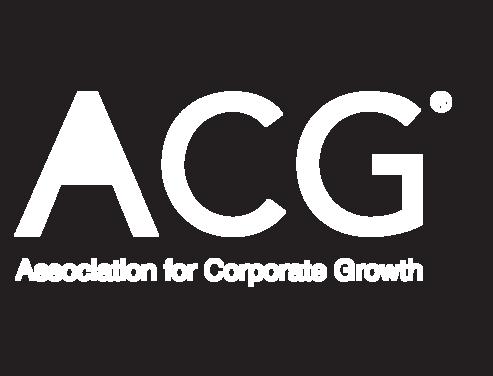
Member Referral Program
Earn a Free Year of Membership!

REFER two new qualified members to ACG and EARN one year of complimentary membership.
Do you know a business professional that would benefit from ACG’s network of middle market dealmakers, corporate leaders, and M&A advisors? What about the hundreds of contentrich programs and events ACG offers throughout the year?

Scan the QR code to submit your referrals and start your path to free membership dues.
How to refer members and earn rewards:
Share Your Story: Let others know how ACG has benefited you From the networking opportunities at events to the exclusive member benefits that have helped you grow in your career, spread the word and share your personal ACG story!
Download and Share Member Benefits: ACG offers a wealth of opportunities to elevate your expertise and expand your network Download the ACG Membership Benefits page and share it with your colleagues and friends to give them a clearer picture about ACG and all that it offers.
Extend an Invitation: Invite a prospective ACG member to an upcoming meeting or event Show them firsthand the powerful ACG network and then encourage them to apply. Don't forget to submit your referral so you get credit when their membership is approved!
The Member Referral Program Runs from April 1-July 31, 2024. *Referrals must be approved by the chapter and membership dues paid to qualify. Visit acg.org for program rules and FAQ’s.


VALUE-ADD: WHAT BUSINESSES GAIN FROM A STRATEGIC HUMAN CAPITAL APPROACH
How integrated human resources service providers can help balance businesses’ HR needs, including DEI, pay transparency, compliance and reporting.
BEST PRACTICE: NAVIGATING THE CORPORATE TRANSPARENCY ACT
Troutman Pepper outlines steps companies should take to determine whether the new law applies to them and what their reporting obligations are.
Business organizations want a single human capital strategy that is compliant, mitigates risk, manages employee engagement and promotes the business’s overall corporate values.
BETH RONNENBURG President, Berkshire Associates
MIDDLE MARKET EXECUTIVE // Summer 2024 43
Review STRATEGIES FOR CREATING VALUE AND GROWING A BUSINESS 44 47
Performance

What Businesses Gain from a Strategic Human Capital Approach
How integrated human resources service providers can help balance a multitude of business HR needs, including DEI, pay transparency, compliance and reporting
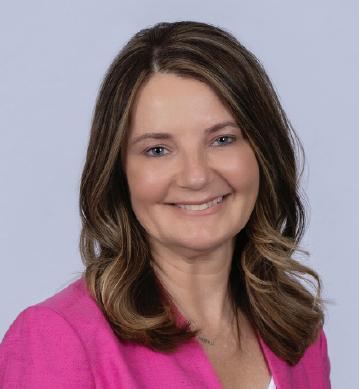 LYNN CLEMENTS Director of Audit and HR Services, Berkshire Associates
LYNN CLEMENTS Director of Audit and HR Services, Berkshire Associates
Employers in the U.S. increasingly see the need to develop a human capital management strategy that spans various compliance requirements. Key to this effort is the use of advanced people analytics and a focus on consolidating a range of HR functions that have traditionally operated in separate siloes. HR services companies are important partners in this effort, with more businesses seeking a single provider that can help them manage various HR compliance issues and address multiple concerns. These include talent acquisition and retention; compliance with increasingly complex, and sometimes contradictory, legal and regulatory requirements; as well as environmental, social and governance (ESG) responsibility metrics. With the media and other external entities scrutinizing companies’ diversity, equity and inclusion efforts, businesses are also managing the risks of internal and external reputational harm when HR compliance efforts fail.
Levine Leichtman Capital Partners-backed Resolution Economics (ResEcon), a provider of labor and employment and forensic accounting services, recently expanded its ability to address clients’ human capital strategy needs with the acquisition of Berkshire Associates. Columbia, Marylandbased Berkshire specializes in helping federal contractors meet their contractual affirmative action compliance obligations. Berkshire Associates President Beth Ronnenburg highlighted the importance of combining diverse areas of human
MIDDLE MARKET EXECUTIVE // Summer 2024 45 PERFORMANCE REVIEW // Value-Add
capital expertise, emphasizing that “business organizations want a single human capital strategy that is compliant, mitigates risk, manages employee engagement and promotes the business’s overall corporate values. To achieve this, you often need a team of experts, such as compliance consultants, data analysts, labor economists and industrial/organizational psychologists who can look at the same problem from different perspectives.”
The broadened expertise and capabilities flowing from the acquisition allow ResEcon to serve as a “one-stop shop” for human capital management services. This results in several efficiencies for clients. For example, integrated HR outsourcing services deliver lower administrative and project ramp-up costs due to shared knowledge of companies’ data systems and HR processes. Similarly, using the same workforce databases to solve multiple HR compliance challenges results in fewer data transfer, maintenance and security concerns. Perhaps most important, an integrated HR outsourcing service develops deeper knowledge of an organization’s business operations and provides the organization with a continuity of practice among myriad overlapping HR obligations.
ResEcon Partner Rick Holt described the importance of these synergies: “Companies are seeking an HR services firm that can help manage multiple human relations concerns using the same workforce data, while solving complex problems that have implications for interrelated HR compliance obligations.”
An example of how integrated HR outsourcing services can help employers comply with various HR obligations more efficiently and strategically is management of pay transparency, pay reporting and pay equity obligations. In recent years, the U.S. Department of Labor and the Equal Employment Opportunity Commission have focused their enforcement efforts on ensuring fair pay for employees. At the same time, states such as California, Colorado, Illinois and New York have passed robust pay transparency and/or pay reporting laws. For global organizations, the European Union requires that companies share information on employee salaries and act if their gender pay gap exceeds certain thresholds. In the past, many employers managed these pay transparency obligations individually, perhaps by state or country. With so many overlapping compliance obligations, more companies are seeking an integrated approach to compensation-related compliance
that balances the full range of organizational and business objectives.
Since ResEcon’s acquisition of Berkshire Associates in 2022, several opportunities have already arisen to leverage ResEcon’s broadened capabilities and provide additional services to existing clients.
For one, ResEcon has worked for the past several years with a major U.S. telecommunication company to implement pay equity analyses on an annual basis. The company recently found itself in need of federal contractor compliance assistance and audit support. ResEcon was able to leverage its new capabilities in the contractor compliance space to step in and assist the client with affirmative action plans and mediation with the Department of Labor.
Berkshire has also worked with a major regional hospital system for several years, providing affirmative action plan support. When this client found itself involved in a contentious and potentially high stakes government audit of its hiring and compensation systems, Berkshire was able to pull in labor economists and IO psychologists with the statistical knowledge and litigation background to assist with rebutting the agency’s claims.
Finally, when the Department of Labor recently released a federal contractor audit list and immediately began scheduling organizations for review, the combined firm was able to quickly scale up and efficiently address the urgent audit support needs for the combined firm’s full range of clients.
As these case studies show, it has become increasingly apparent to U.S. corporate leadership that the escalating scope, complexity and consequences associated with HR compliance mandate a thoughtful, unified approach that leverages the best expertise available. This elevated demand for HR consulting services motivates and justifies consolidation in this space, including ResEcon’s acquisition of Berkshire Associates. The integrated HR outsourcing model built by firms like ResEcon will continue to grow as companies look to address a broad range of human capital strategy needs in an ever-changing environment. //
LYNN CLEMENTS oversees the pay equity, HR services and audit defense practices at Berkshire Associates.
Throughout her career, Clements has provided clients with strategic insight and practical compliance and risk management guidance.
middlemarketgrowth.org 46
PERFORMANCE REVIEW // Value-Add
Navigating the Corporate Transparency Act
What you need to know as of June 2024
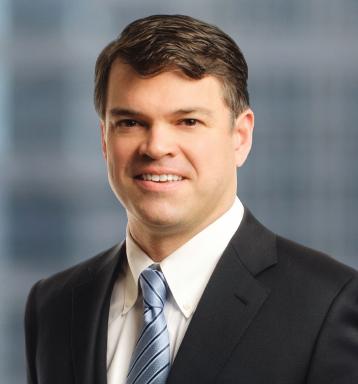 TDANIEL W.
TDANIEL W.
MCDONOUGH
Partner, Troutman Pepper
o help combat financial crimes, the Corporate Transparency Act (CTA) requires certain businesses formed, or qualified to do business, in the U.S. to submit a report that discloses information about the reporting company, certain owners and others who have “substantial control” over the reporting company to a confidential database maintained by the Financial Crimes Enforcement Network (FinCEN).
Far in advance of when the requirements of the CTA were implemented in January 2024, Troutman Pepper contacted clients to ensure they were aware of the necessary review of CTA applicability, its potential impact on their compliance function and the need to obtain relevant information from affiliates for any required reporting.
Confirm Applicability Far in Advance of Deadlines
The first step companies should take is to conduct a CTA exemption analysis so they can confirm whether the CTA is applicable to them and, if so, whether any of the 23 exemptions from reporting are applicable. Many of the exemptions are focused on parties that already regularly report to the federal government, like banks, utilities, tax-exempt entities and entities with publicly traded securities.
If a company is exempt as of the time that a report would be required to be filed, then, for so long as it remains exempt, it is not required to file a report under the CTA. However, if circumstances change and it no longer qualifies for any exemption, it will have 30 days to gather all relevant information and file. Given this abbreviated time frame and the detailed information required to be reported about equity holders and controlling persons, it is important to complete the exemption analysis and potential reporting analysis in advance so the reporting company can meet the 30-day deadline if and when any relevant exemptions are no longer applicable.
Reporting Obligations for Companies
Reporting companies that are part of an affiliated group should confirm what portion of an exemption analysis, as well as any subsequent beneficial ownership analysis and filing, must be handled by each of them. It will be important for non-exempt reporting companies to obtain relevant information needed to conduct those activities and timely report to ensure compliance and avoid the costly penalties imposed by the CTA.
The sophistication of typical private equity investment structures and the nuanced manner in which these structures are often managed may make the analysis regarding “substantial control” under the CTA time consuming. As such, companies should begin working on the analysis far in advance of any applicable filing deadline.
Also, it is advisable for companies to plan to file, if needed, closer to the applicable filing deadline because additional FAQs are expected from FinCEN and the CTA is being challenged in some courts. There may be greater clarity achieved as time goes on that will allow reporting companies to complete their report with greater certainty. //
MIDDLE MARKET EXECUTIVE // Summer 2024 47 Content Provided by ACG Partners and Featured Firms PERFORMANCE REVIEW // Best Practice
Troutman Pepper

Uncover proprietary transactional information provided by an established pool of private equity groups on a blind and confidential basis. Obtain accurate and up-to-date information to value and assess middle-market businesses.
When it comes to valuing M&A transactions in the middle market, no other source provides the level of quality and granularity as GF Data.
GF Data provides the most reliable data on private-equity sponsored M&A transactions with enterprise values of $10 million – $500 million.
To learn more about subscribing or contributing, scan the code or contact bdunn@acg.org.
GFData.com
STOP GUESSING Get Real Values from Actual Deals No Guessing. No Extrapolation.
GF Data is proud to be part of the ACG family.
The Wrap-Up

MIDDLE MARKET EXECUTIVE // Summer 2024 49 RECAP OF RECENT EVENTS AND KEY TAKEAWAYS FROM THIS EDITION
smaller deals are flourishing,
well as
lot of middle-market deals, but
big mega deals
happening as much.
What we’re seeing in deal flow right now is that
as
a
the
aren’t
Industry
56 50 BACKSTAGE: A MARKET UPDATE WITH GF DATA AND FORVIS MAZARS KEY TAKEAWAYS Insights from the stories in this issue.
SCOTT LINCH
Private Equity
Practice Leader, Forvis Mazars

Forvis Mazars’ CFO Roundtable Explores the State of the Market
Falling valuations and continuation funds are trends to watch, participants said
SPONSORED BY
Arecent event hosted by Forvis Mazars, an international accounting and consulting network, brought together finance leaders for a discussion about the state of the market, deal activity, continuation funds and more.
Among the participants in the Forvis Mazars CFO Roundtable, hosted in Atlanta on May 16, were Forvis Mazars’ Billy Parker, national leader of the firm’s Technology & Services practice, and Scott Linch, leader of the Private Equity practice. Bob Dunn, managing director of GF Data, an ACG company, presented quarterly data about middle-market deal activity, pricing, terms and more.
Twenty attendees participated in the roundtable, which was held at the Cherokee Town and Country Club.
Here are some of the insights shared by Parker, Linch and Dunn, lightly edited and condensed for print.
Contextualizing the Market
BOB DUNN: This has been a disappointing year for deals so far. At GF Data, we tracked 72 deals in the first quarter of 2024, compared to 291 deals for all of 2023; 333 deals for 2022; and 501 deals for 2021.
But context is important: 2021 was an outlier. It was the product of a realization that business wasn’t going to grind to a halt with COVID, and you could do virtual site visits and handle business efficiently on Zoom. In general, between 330 and 350 deals a year is more typical.
So, 2023 was off by more than 40% compared to 2021, and we’re about 17% off from where the market would normally be. Higher interest rates obviously factor
MIDDLE MARKET EXECUTIVE // Summer 2024 51 THE WRAP-UP // Backstage
Content Provided by ACG Partners and Featured Firms
Panelists
SCOTT LINCH leads the Private Equity industry practice for Forvis Mazars, a Top 10 international professional services network that offers comprehensive assurance, tax, advisory and wealth management services. Linch has dedicated much of his career to conducting buy-side and sell-side due diligence services for clients in a variety of industries with transaction sizes ranging from $2 million to more than $9 billion. Learn more about Forvis Mazars at forvismazars.com.

BILLY PARKER is the national industry leader of Forvis Mazars’ Technology & Services practice. He has more than 30 years of experience, with a focus on the tech sector. Parker serves as lead audit partner, client executive partner and/or industry partner for public and private technology companies ranging from the Fortune 1000 to startups.

BOB DUNN is managing director of GF Data, an ACG company that provides data on private equity M&A transactions between $10 million and $500 million in enterprise value, based on information contributed by 320 participating private equity firms. Learn about how a GF Data subscription can help your firm compete more effectively in dealmaking at gfdata.com.
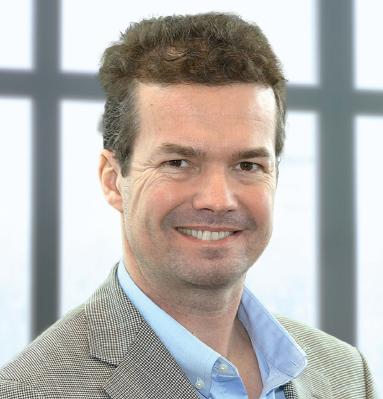
into that. I think also it’s easy to forget in 2023 we had the second largest banking failure in U.S. history. That seems like a long time ago now, but obviously it’s reverberating in terms of what we’re paying for debt.
The other point to note is a marked step-down in average valuations from 2022 through 2023: about three-tenths of a turn of trailing 12-month EBITDA. Then in the first quarter of 2024, there was an even larger drop of more than half a turn of EBITDA.
I view this as a positive for the market. I spoke to one of our family office contributors at the end of the fourth quarter and said we’ve really had a deal flow problem in the last year. And he said, “No, we’ve had a deal valuation problem, because we can’t agree on the value. Sellers still think it’s 2021, but it’s not 2021 anymore.”
COVID was an atypical period, so it is hard to make comparisons. Is the earnings growth a lot of industries experienced during COVID sustainable? I would venture that it isn’t, and we’re seeing a lot of dented companies coming through with declining revenue. But I think that’s a positive, and there are signs in the market of acceptance that prices need to come down.
We need bridging mechanisms, which have been another big feature of the last year or so. Earnouts, seller rollover equity—anything that helps to align interests.
I don’t think any seller likes rollover equity or earnouts, but buyers want to have alignment of interest. And if the seller believes growth is sustainable, then the buyer is asking them to put their money where their mouth is. About 60% of transactions in the last five quarters included an earnout, which is atypical, but it’s very much part of the landscape now.
Small Deals Loom Large
DUNN: Most of 2023 was a flight to quality, and a flight up-market in terms of enterprise value. That’s starting to slip away a little bit. Now there’s more pressure on the larger companies in terms of debt financing, but it’s improving for the smaller ones because the smaller companies encountered the challenges earlier. The larger ones are now starting to see challenges on pricing. I think this is all part of the market digesting the fact that it’s a different time than it was two years ago.
SCOTT LINCH: What we’re seeing in deal flow right now is that smaller deals are flourishing, as well as a lot of middle-market deals, but the big mega deals aren’t happening as much, especially with interest rates going up. Interestingly, add-ons to companies right now account for 75% of all deal flow.
middlemarketgrowth.org 52
Content Provided by ACG Partners and Featured Firms
DUNN: There’s been some interesting distortion on the price paid for platforms versus add-ons. Traditionally, you see add-ons going for much less than platforms, but now we’re seeing add-ons are going for more, at least in a couple of the size tiers.
Moving down-market is a trend that we saw in 2023 and in the latter part of 2022. Larger firms are using existing credit facilities on their platforms to buy other companies, because they don’t like the rates they’re getting, or they can’t get financing. This means some of the add-ons are going for higher multiples than platforms, because these bigger players are involved. That is some of the distortion you still see: 7.3x (total enterprise value (TEV)/ EBITDA) average for platforms, versus 6.7x for addons. That’s less of a difference than we’d expect to see between the two.
Public Vs. Private
BILLY PARKER: The stock market is at an all-time high, including Nasdaq. I know it ebbs and flows, but are you seeing a correlation between the stock market and private company values?
LINCH: Ultimately, the public markets have multiples of earnings, too, so those will drive these multiples to some extent. But private companies are often discounted; the liquidity is different than in the stock market. You have some private company discounts, among other factors.
DUNN: While there was an impact on lending in the middle market, you didn’t have the challenges of syndication last year, which made it worse for larger public companies compared to smaller private companies.
LINCH: Most companies have been relying on private credit, versus senior debt, to get deals done, and now it’s starting to shift a little bit with senior debt usage picking up.
Continuation Funds
DUNN: Continuation funds are becoming a real factor. A continuation fund allows a private equity sponsor to essentially sell the interest that the LP has and return the money but retain the ownership of the company. It’s always been a fringe strategy, but we’re seeing a lot more activity there.
LINCH: Continuation funds are an option for private equity firms when they want to sell a company but it’s not a good time to sell. The LPs want liquidity. The private equity firm raises a fund that buys the company so that the GP can keep
Traditionally, you see add-ons going for much less than platforms, but now we’re seeing add-ons are going for more, at least in a couple of the size tiers.
BOB DUNN Managing Director, GF Data
their interest in the company while also giving LPs their money back.
The biggest deal recently was the SRS Distribution deal, which was sold to Home Depot in a huge exit for Leonard Green. But Leonard Green was able to hold that asset for longer because they raised a continuation fund.
PARKER: A cool thing about continuation funds for investors is you have a shorter horizon to liquidity (typically three to four years) instead of a typical five- to seven-year horizon with most PE investments. I think we’ll see more use of continuation funds because of the market in general and more investors being attracted to PE with these shorter liquidity horizons. They’re pretty cool products, which makes investing in the industry overall even more compelling.
LINCH: And most of the LPs don’t roll over. They’re given the first right to stay in the continuation fund and stay in the company, but most don’t because they really need the liquidity.
PARKER: It works out great for the investor. People can say, “OK, I’ll get in if I can get out in two or three years,” as opposed to having a five-year minimum and a 5% gate.
LINCH: The bigger deals aren’t getting done right now because interest rates are up and hold periods are a lot longer.
Normally, with private equity you sell your business in five years. Now you may have to hold it seven or eight years, and to get to that seven or eight, you have to give liquidity back by five.
It’s not that the businesses aren’t performing, it’s that the timing has not been optimal to sell them. //
MIDDLE MARKET EXECUTIVE // Summer 2024 53
Content Provided by ACG Partners and Featured Firms
JOIN THE NETWORK

Middle Market Growth is the official publication of the Association for Corporate Growth (ACG). ACG offers a wealth of resources to members and the broader middle-market M&A community through national and local networking events, digital and print media outlets (including this one), a robust middle-market valuation database, industr y education and more. Here are some of the best resources ACG provides that can help you do your job better.
What’s in it for YOU?
As a member of ACG, you gain access to the exclusive network of 15,000 middlemarket M&A professionals that we serve and benefit from the connections that ACG actively facilitates. According to our members, 75% of ACG members do deals with other members, and 86% of members are either very or extremely likely to recommend ACG to a friend or colleague.
Member Benefits
Member-Exclusive Events and Programming: Collaborate with other members and benefit from expert panels and industry insights.
ACG Member Directory Access: Search for and connect with fellow members within ACG’s exclusive directory of middle-market professionals.
ACG JobSource®: Post or search for a job on ACG’s job board for middlemarket professionals.
Member-Only Offers: Claim discounts and deals courtesy of ACG’s partners such as Grata, EPG and others. Check out acg.org/membership-tools/ offers-acg-partners for current offers.
Print Magazine Subscription: Receive print editions of Middle Market DealMaker, Executive and special reports.

WHAT ELSE CAN YOU DO WITH ACG?
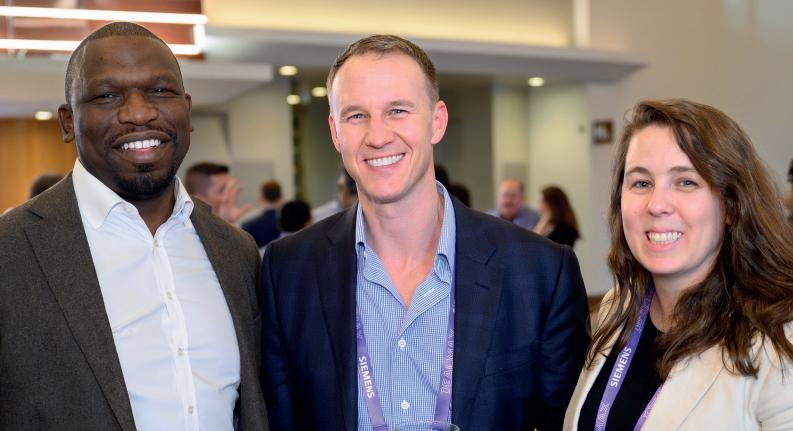
Attend an Event
DealMAX is ACG’s flagship dealmaking conference with more than 3,000 attendees, including 800 private equity investors, 675 investment banks, and more than 200 operating partners and strategic acquirers. More than 13,000 one-on-one meetings were scheduled in three days at DealMAX 2023. Check out Dealmax.org for event and registration information.
ACG hosts hundreds of local chapter events annually for middle-market professionals. Whether you prefer a round of golf, wine tasting or an educational lunch, you’ll find it here. Visit acg.org/events to find out what’s happening near you.

Stay in the Know
The Middle Market Growth editorial team produces a weekly email that features thought leadership and news from around the middle market, including our PE Weekly deal roundup. Learn more and sign up to receive the newsletters at middlemarketgrowth.org/subscribe
ACG Media keeps middle-market dealmaking and operating professionals up to date on news, trends and best practices through video, with its GrowthTV channel, and audio, with the Middle Market Growth Conversations podcast. Learn more at middlemarketgrowth.org/category/news-trends.
Power Your Deals
Did you know that GF Data, a powerful middle-market private equity valuation database, is an ACG company? GF Data publishes quarterly reports on M&A, leverage and key deal terms and provides an online valuation database with continuously available valuation comps organized by NAICS industry code. Visit gfdata.com, email info@gfdata.com or call 610-6164607 for more information.

Connect
ACG operates in more than 60 local markets. Visit acg.org/ membership-tools/find-chapter to find your local chapter. You can also email us at membership@acg.org.
THE WRAP-UP // Key Takeaways
BURDEN OF PROOF
Amid slower exit activity, many limited partners are willing to be patient with sponsors as they await the right time to sell. But LPs are less forgiving during fundraising, when they want to see proof of a successful exit before they’ll fund a PE firm’s next round. “Stout’s Rudi Moreno Shares Tips for Value Creation During Longer Hold Periods,” p. 8.
SUPPORT SYSTEM
Dallas-based PE firm Trive Capital organizes its operating partner team by functional expertise, a structure that Joe McDougall, Trive’s managing director of operating partners, says prevents tension between the operating partners and portfolio company leaders: “We’re not industry experts, which helps us be less threatening to the management team.” “Letting Portfolio Companies Take the Lead,” p. 30.
STRIKING GOLD
Although no business owner wants a walkout, a worker strike can have a silver lining. The process of communicating and collaborating with a union to understand what striking workers are demanding can guide investors to a more effective value-creation plan, says Centri Business Consulting Managing Director Mike Warech. “Where to Turn When Portco Workers Strike,” p. 12.
CATCH UP QUICK: From technology enhancements to labor relations, here are some of the highlights from this value creationthemed edition of Middle Market Executive
CHECKERED PAST
Value-creation strategies run the gamut, but one common approach involves technology upgrades. Payment automation is a notable area for efficiency gains, since 40% of payments in the middle market are still made by check. “Looking Inward,” p. 36.
COMMON CORE
Developing a singular platform that meets the needs of clients with varying levels of technological maturity poses a challenge in the property services space, says Craig Torrance, CEO of MCS, whose clients range from financial institutions to large corporations like Starbucks. In response, MCS is increasing its investment in technology to cater to its disparate client base. “MCS’ CEO on the Strategic Acquisition of Five Brothers,” p. 20.
ESCAPING THE SPREADSHEET HANDCUFFS
Business intelligence systems can help private equity firms track performance more effectively by working around the limitations posed by Excel and finance, writes Sapling Financial Consultants. Pulling data from live operational systems with leading indicators can lead to more optimal performance tracking. “Unlocking the Power of Business Intelligence in Value Creation,” p. 11.


C M Y CM MY CY CMY K

WWW.DEALMAX.ORG DEALMAX RETURNS APRIL 7 - 9, 2025 ARIA RESORT & CASINO | LAS VEGAS, NEVADA SAVE THE DATE



 ANASTASIA DONDE Senior Editor, Middle Market Growth adonde@acg.org
ANASTASIA DONDE Senior Editor, Middle Market Growth adonde@acg.org














 AROB HONG Co-Founder & CEO, Sapling Financial Consultants
AROB HONG Co-Founder & CEO, Sapling Financial Consultants




























 LYNN CLEMENTS Director of Audit and HR Services, Berkshire Associates
LYNN CLEMENTS Director of Audit and HR Services, Berkshire Associates
 TDANIEL W.
TDANIEL W.












